Q. Tyrell Davis
Selecting Continuous Life-Like Cellular Automata for Halting Unpredictability: Evolving for Abiogenesis
Apr 15, 2022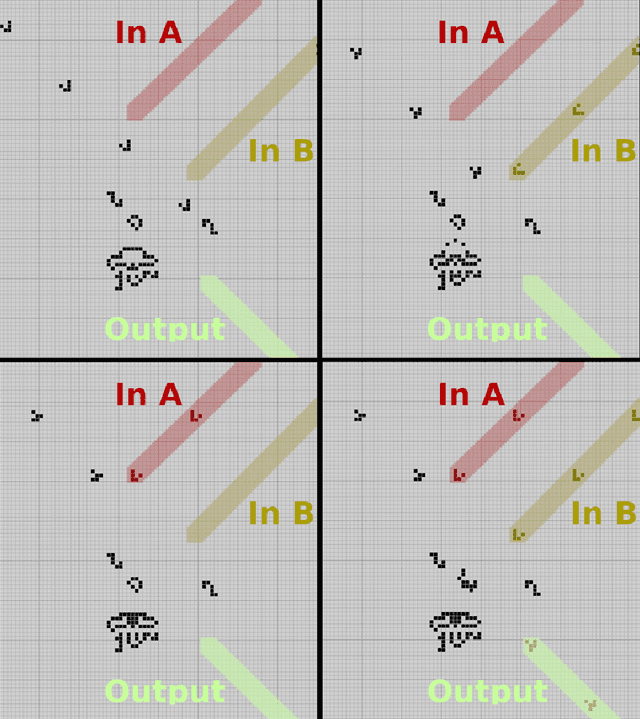
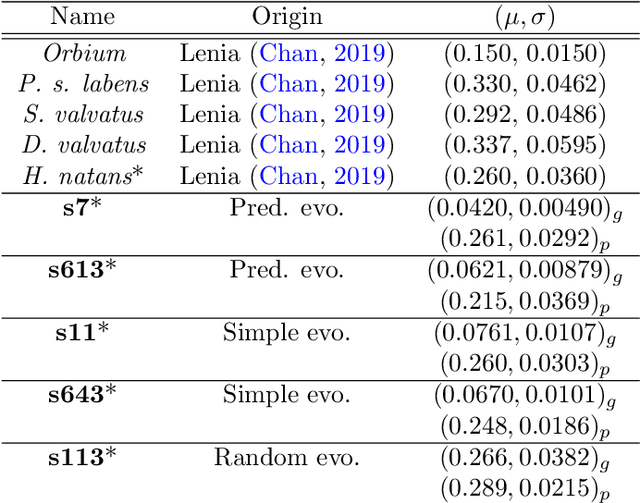
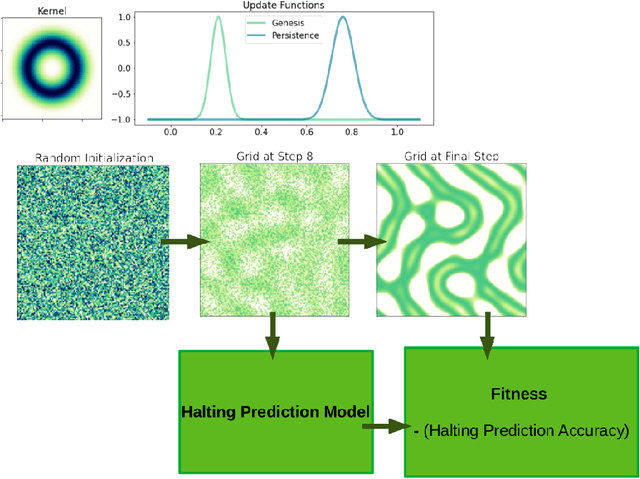
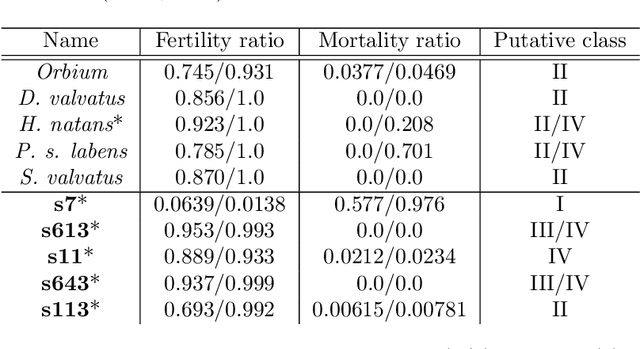
Abstract:Substantial efforts have been applied to engineer CA with desired emergent properties, such as supporting gliders. Recent work in continuous CA has generated a wide variety of compelling bioreminescent patterns, and the expansion of CA research into continuous numbers, multiple channels, and higher dimensions complicates their study. In this work we devise a strategy for evolving CA and CA patterns in two steps, based on the simple idea that CA are likely to be complex and computationally capable if they support patterns that grow indefinitely as well as patterns that vanish completely, and are difficult to predict the difference in advance. The second part of our strategy evolves patterns by selecting for mobility and conservation of mean cell value. We validate our pattern evolution method by re-discovering gliders in 17 of 17 Lenia CA, and also report 5 new evolved CA that support evolved glider patterns, differing from previously reported Lenia patterns. The CA reported here share neighborhood kernels with previously described Lenia CA, but exhibit a wider range of typical dynamics than their Lenia counterparts. Code for evolving continuous CA is made available under an MIT License.
Carle's Game: An Open-Ended Challenge in Exploratory Machine Creativity
Jul 13, 2021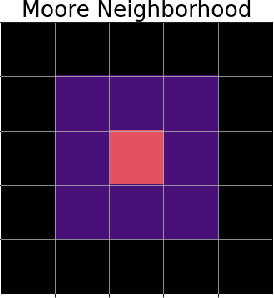
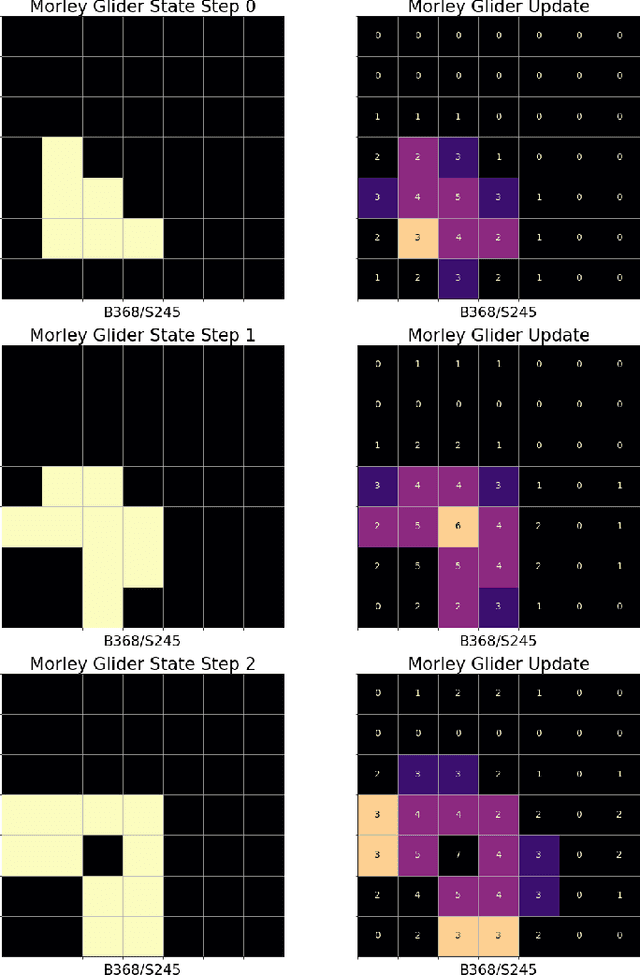
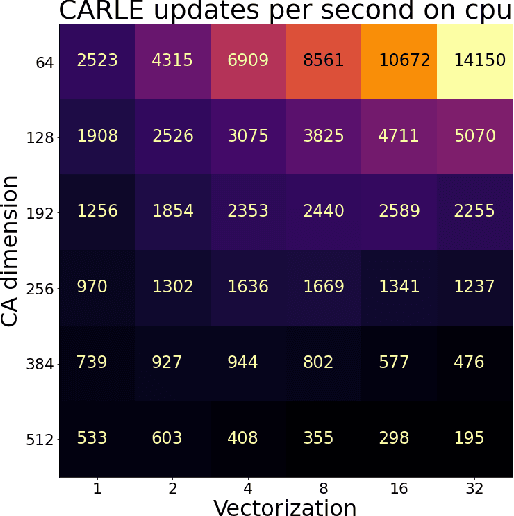
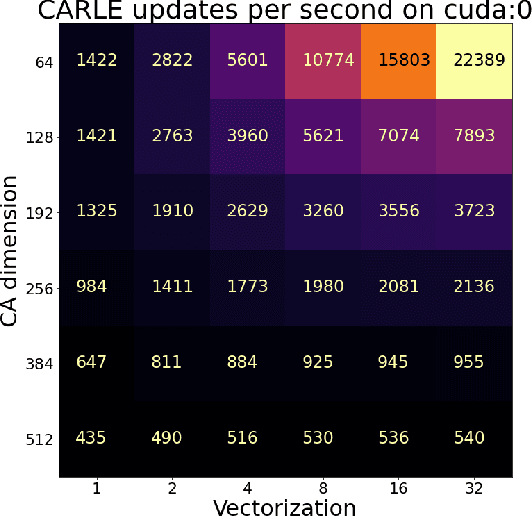
Abstract:This paper is both an introduction and an invitation. It is an introduction to CARLE, a Life-like cellular automata simulator and reinforcement learning environment. It is also an invitation to Carle's Game, a challenge in open-ended machine exploration and creativity. Inducing machine agents to excel at creating interesting patterns across multiple cellular automata universes is a substantial challenge, and approaching this challenge is likely to require contributions from the fields of artificial life, AI, machine learning, and complexity, at multiple levels of interest. Carle's Game is based on machine agent interaction with CARLE, a Cellular Automata Reinforcement Learning Environment. CARLE is flexible, capable of simulating any of the 262,144 different rules defining Life-like cellular automaton universes. CARLE is also fast and can simulate automata universes at a rate of tens of thousands of steps per second through a combination of vectorization and GPU acceleration. Finally, CARLE is simple. Compared to high-fidelity physics simulators and video games designed for human players, CARLE's two-dimensional grid world offers a discrete, deterministic, and atomic universal playground, despite its complexity. In combination with CARLE, Carle's Game offers an initial set of agent policies, learning and meta-learning algorithms, and reward wrappers that can be tailored to encourage exploration or specific tasks.
 Add to Chrome
Add to Chrome Add to Firefox
Add to Firefox Add to Edge
Add to Edge